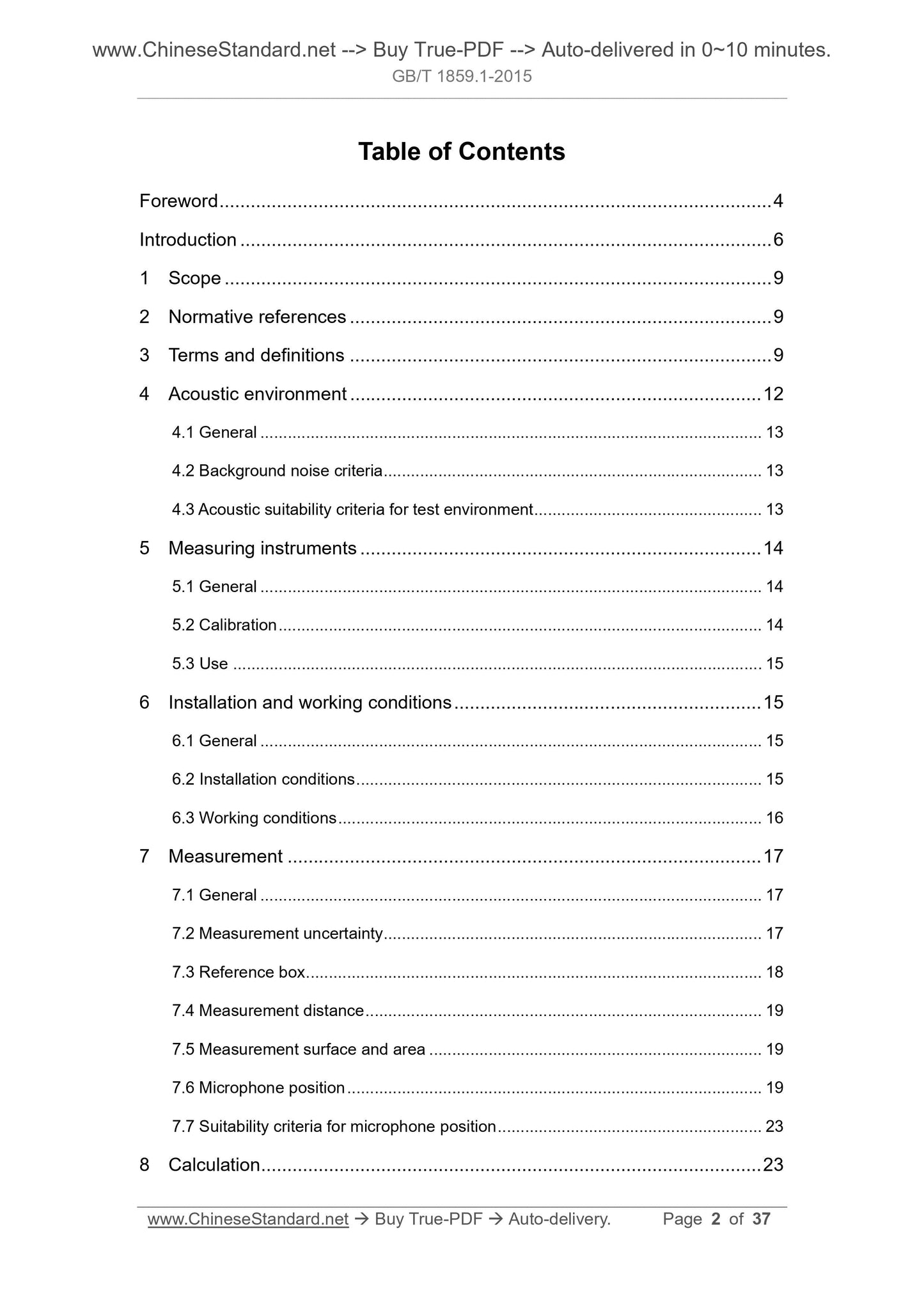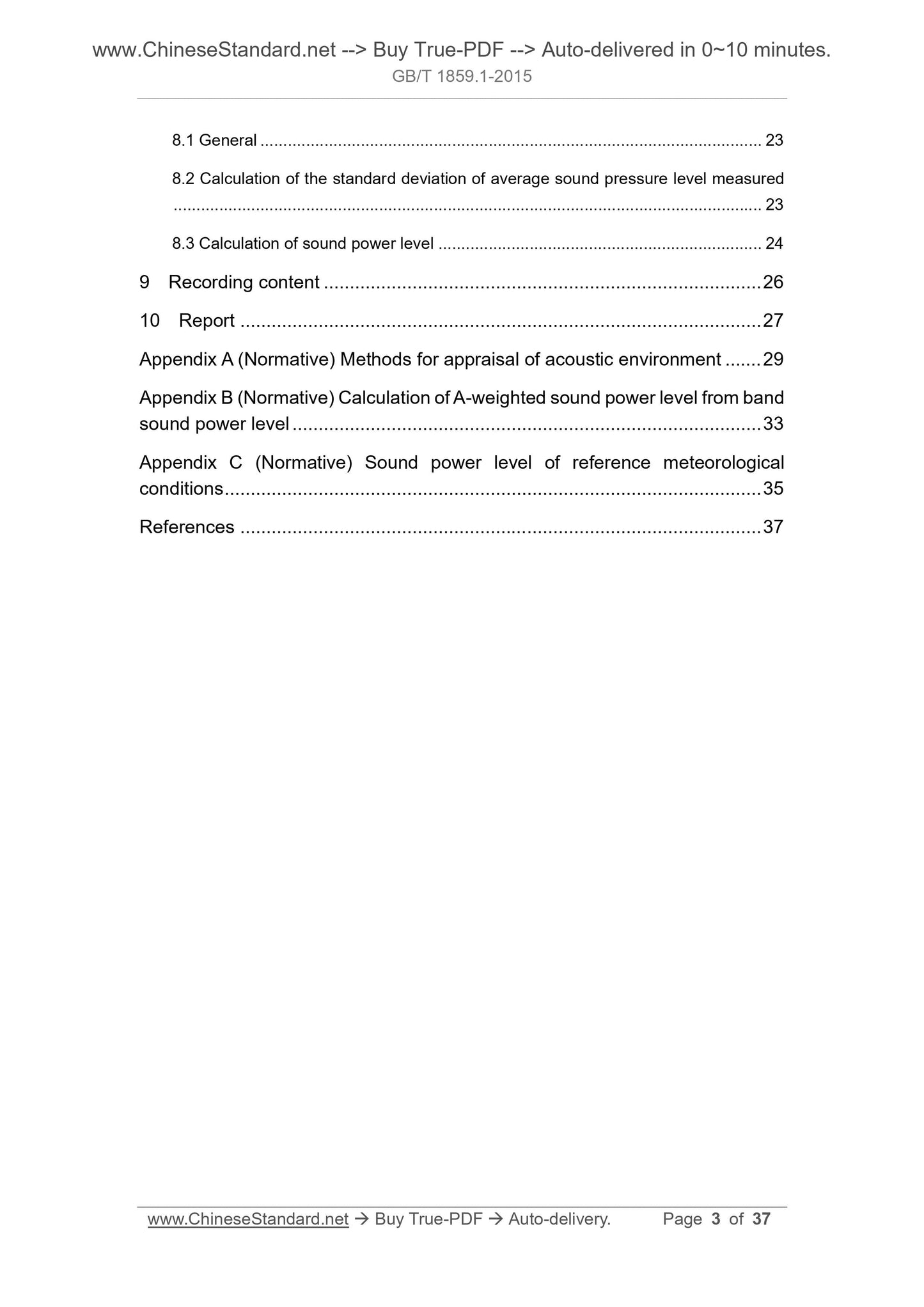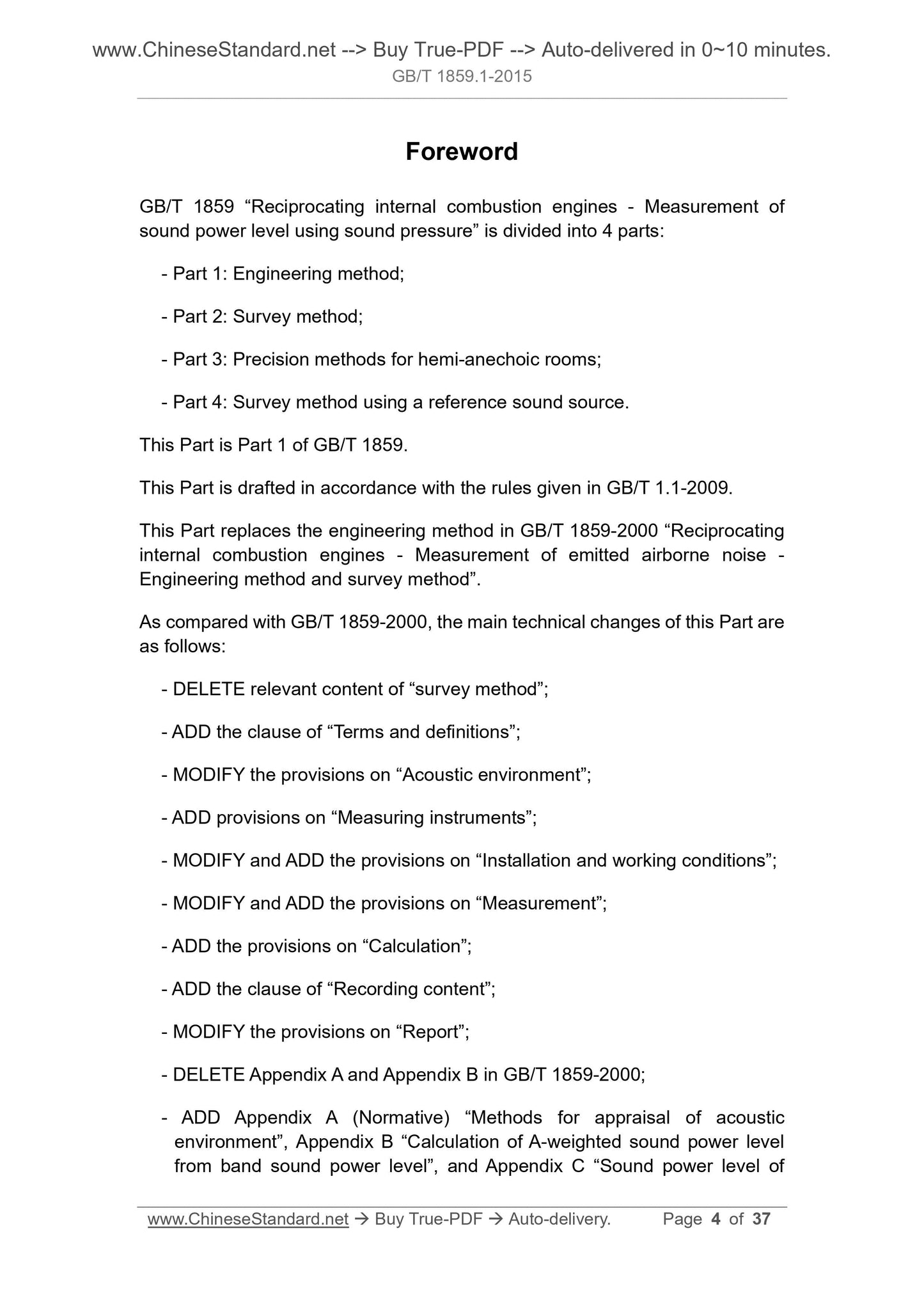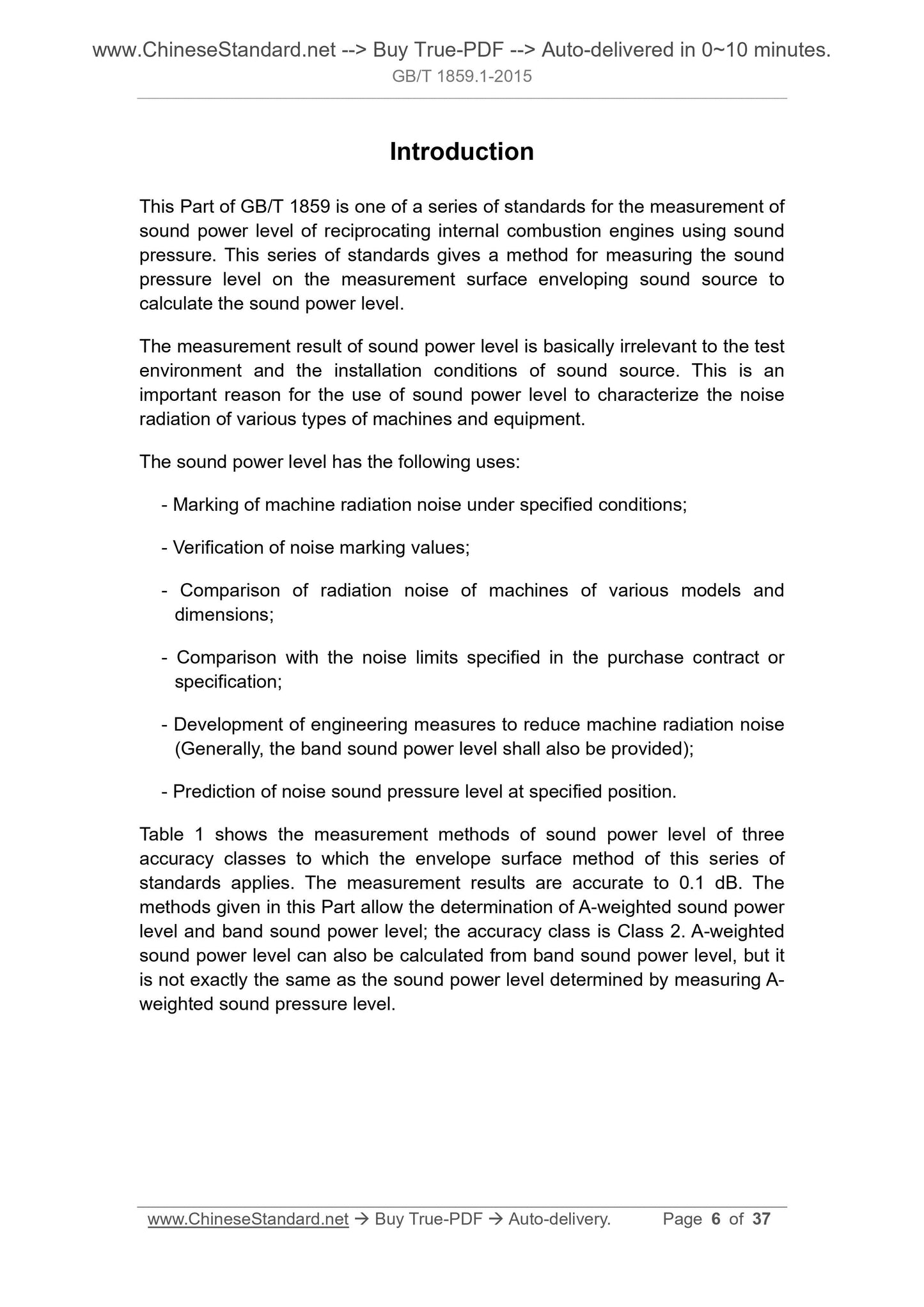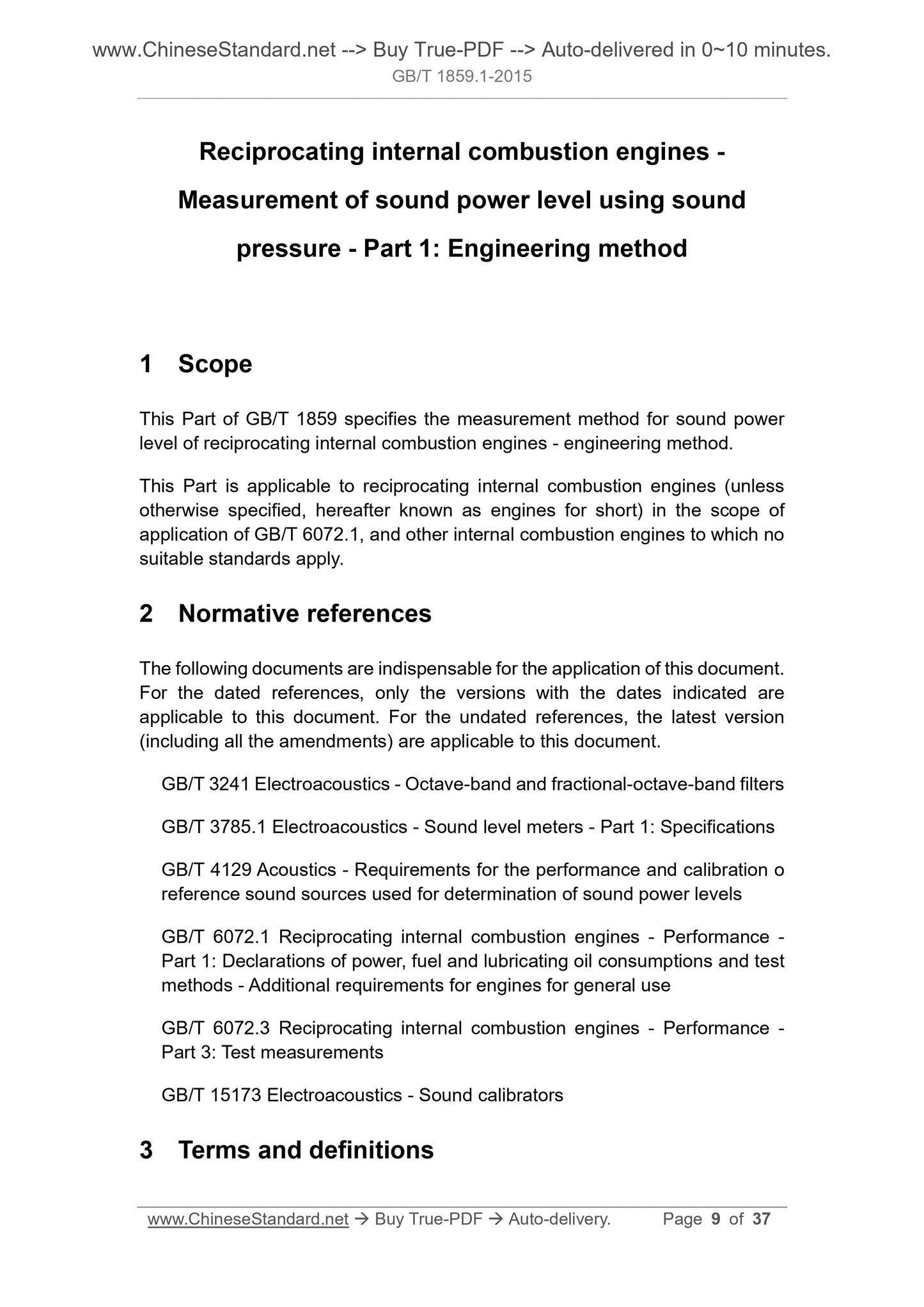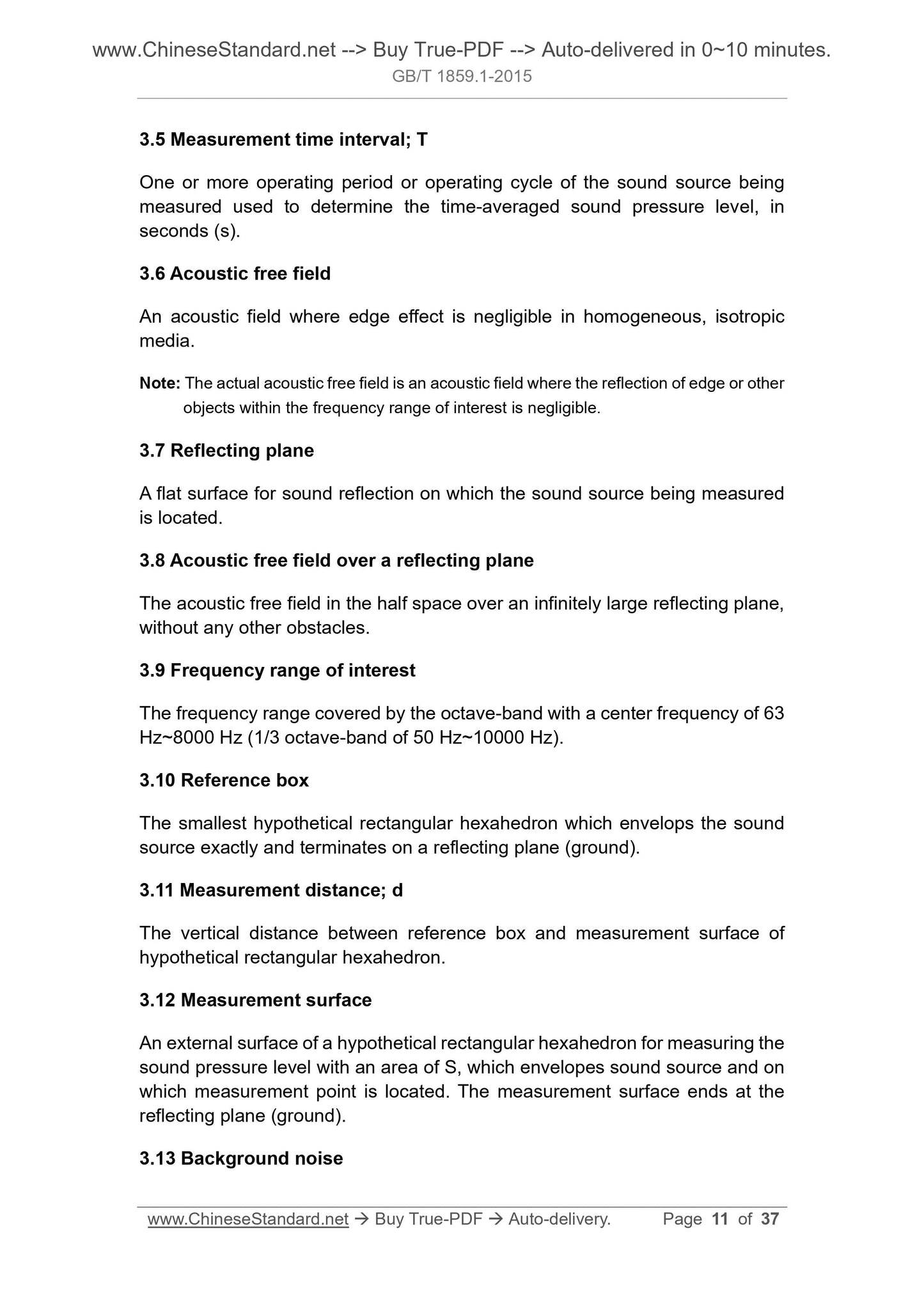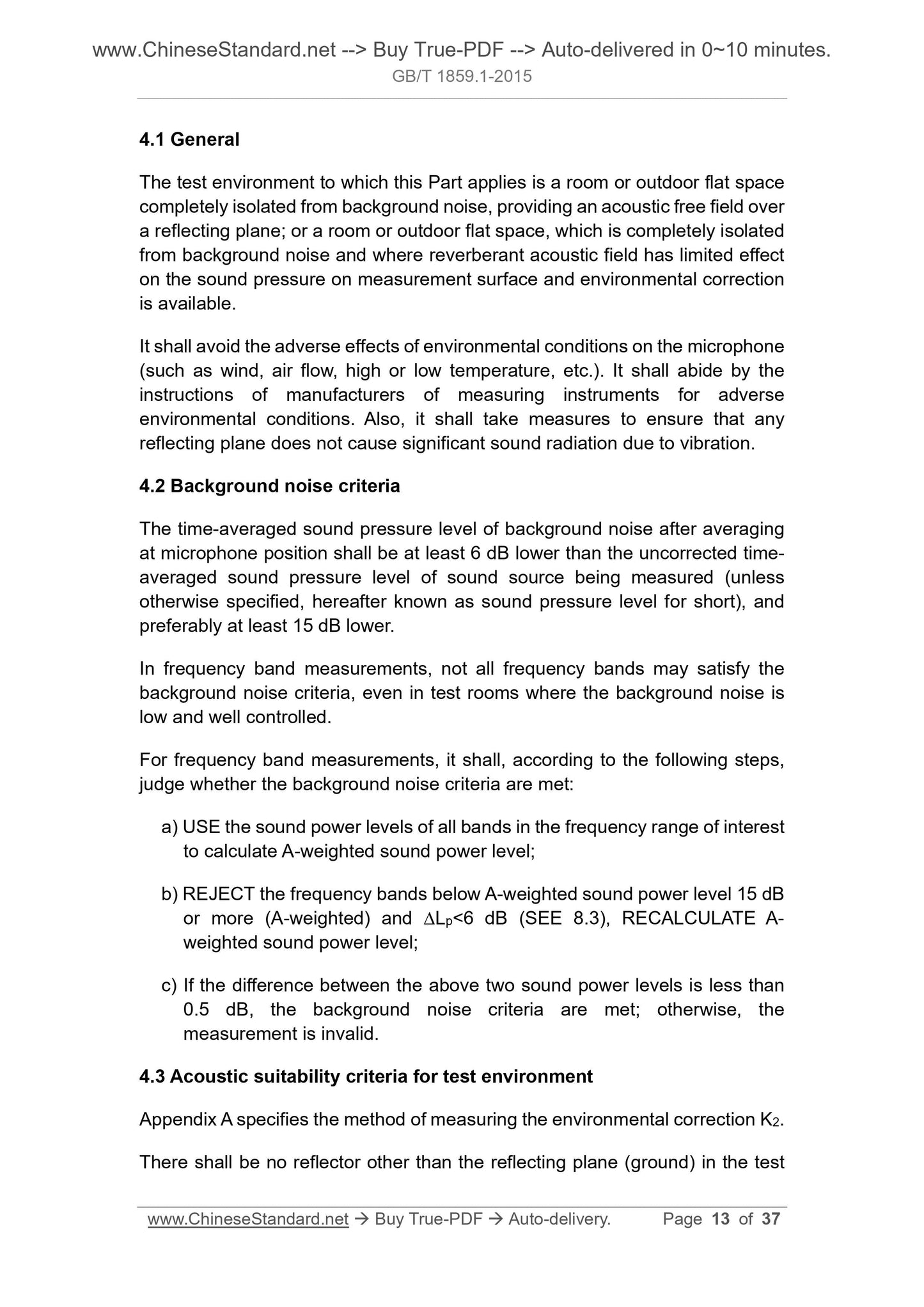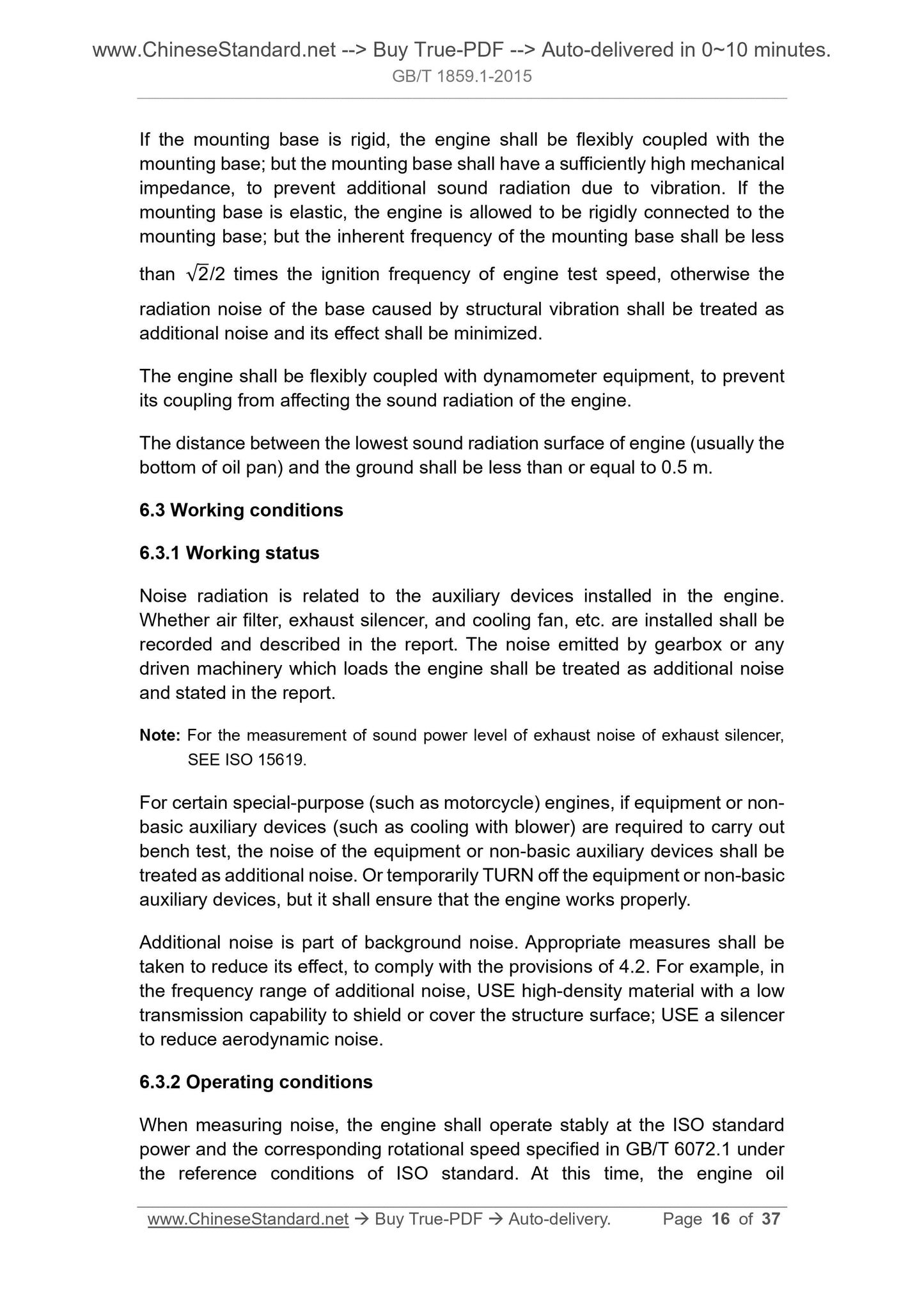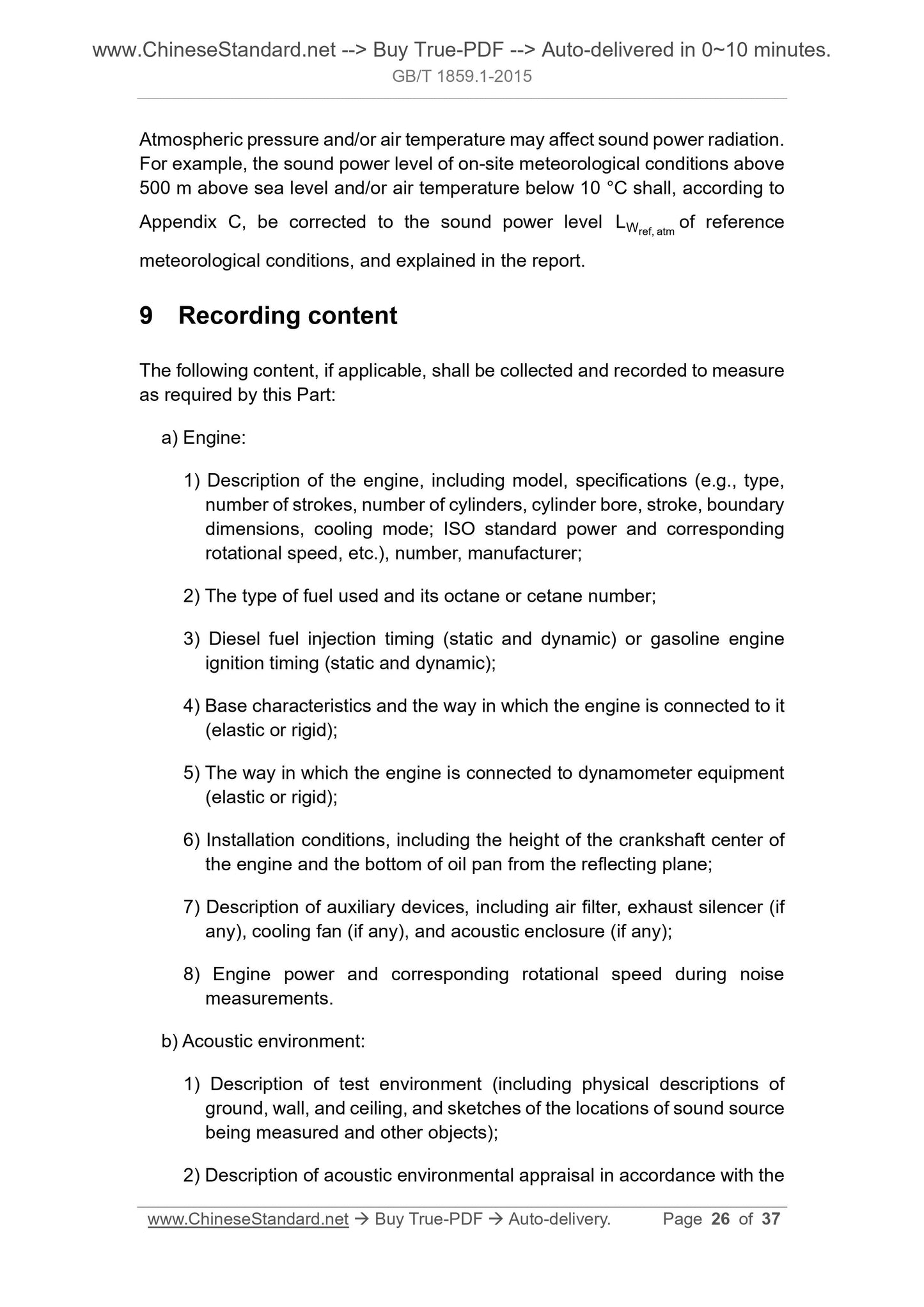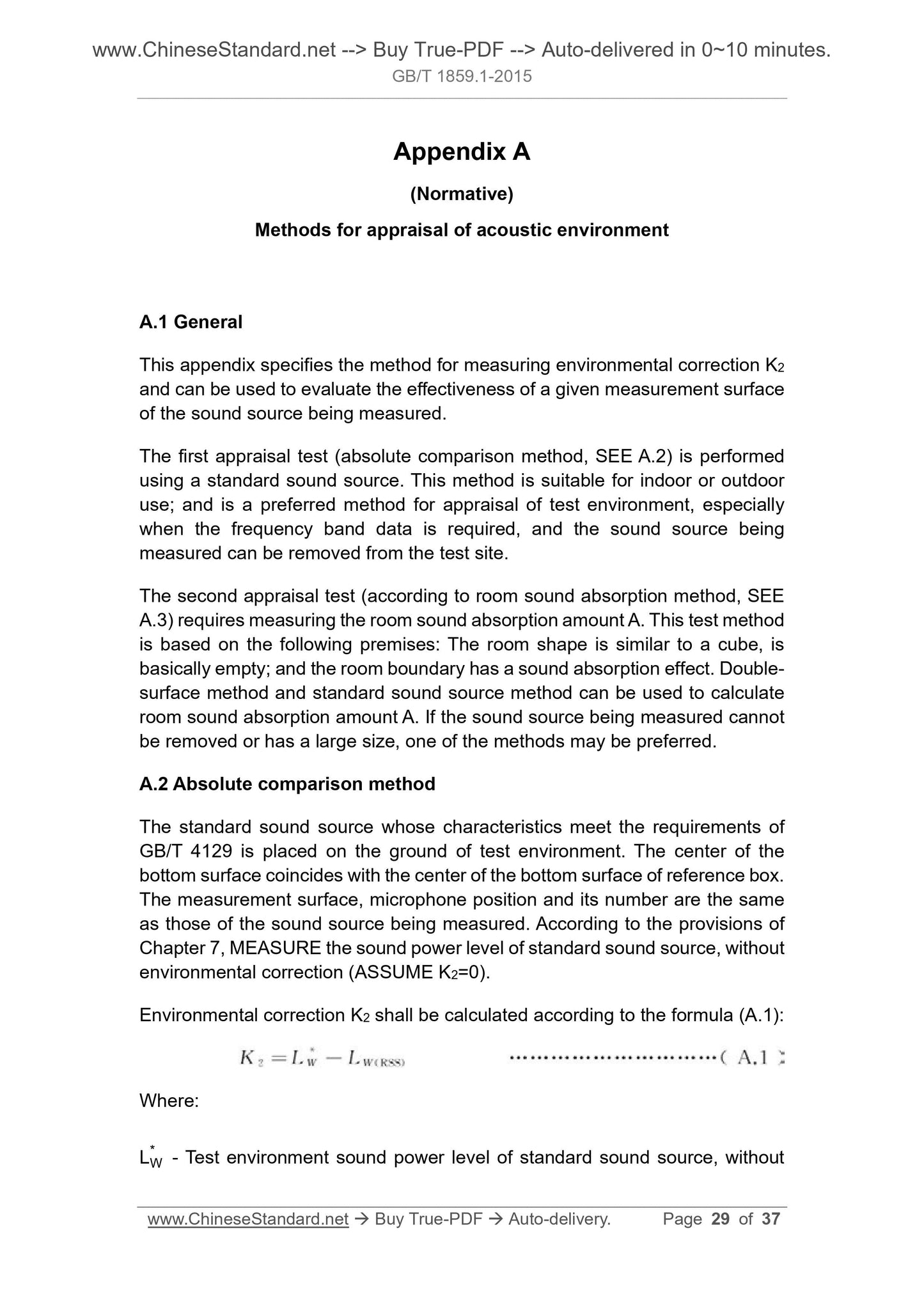1
/
of
11
www.ChineseStandard.us -- Field Test Asia Pte. Ltd.
GB/T 1859.1-2015 English PDF (GB/T1859.1-2015)
GB/T 1859.1-2015 English PDF (GB/T1859.1-2015)
Regular price
$150.00
Regular price
Sale price
$150.00
Unit price
/
per
Shipping calculated at checkout.
Couldn't load pickup availability
GB/T 1859.1-2015: Reciprocating internal combustion engines - Measurement of sound power level using sound pressure - Part 1: Engineering method
Delivery: 9 seconds. Download (and Email) true-PDF + Invoice.Get Quotation: Click GB/T 1859.1-2015 (Self-service in 1-minute)
Newer / historical versions: GB/T 1859.1-2015
Preview True-PDF
Scope
This Part of GB/T 1859 specifies the measurement method for sound powerlevel of reciprocating internal combustion engines - engineering method.
This Part is applicable to reciprocating internal combustion engines (unless
otherwise specified, hereafter known as engines for short) in the scope of
application of GB/T 6072.1, and other internal combustion engines to which no
suitable standards apply.
Basic Data
| Standard ID | GB/T 1859.1-2015 (GB/T1859.1-2015) |
| Description (Translated English) | Reciprocating internal combustion engines - Measurement of sound power level using sound pressure - Part 1: Engineering method |
| Sector / Industry | National Standard (Recommended) |
| Classification of Chinese Standard | J93 |
| Classification of International Standard | 27.020 |
| Word Count Estimation | 24,250 |
| Date of Issue | 2015-12-10 |
| Date of Implementation | 2016-07-01 |
| Older Standard (superseded by this standard) | GB/T 1859-2000 |
| Quoted Standard | GB/T 3241; GB/T 3785.1; GB/T 4129; GB/T 6072.1; GB/T 6072.3; GB/T 15173 |
| Regulation (derived from) | National Standard Announcement 2015 No.38 |
| Issuing agency(ies) | General Administration of Quality Supervision, Inspection and Quarantine of the People's Republic of China, Standardization Administration of the People's Republic of China |
| Summary | This standard specifies the method for the determination of sound power levels of reciprocating internal combustion engine - Engineering method. This standard applies to GB /T 6072.1 Scope of the reciprocating internal combustion engine (hereinafter, unless otherwise indicated, referred to as the engine), and there is no other suitable standard internal combustion engine can be used. |
Share

